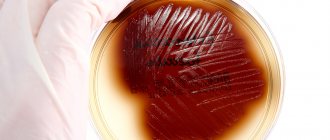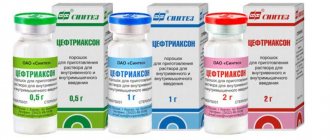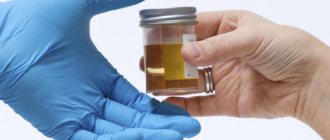Get tested for “Group B Streptococcus” at the CIR Laboratory
Group B streptococci (Strept. Agalactiae) are bacteria that are found in the lower intestines of 10-35% of healthy men and in the vagina and/or lower intestines of 10-35% of healthy women. Group B streptococci should not be confused with group A streptococci, which cause strep throat. Individuals who have group B streptococci in their body but do not cause any symptoms are called carriers of the bacteria. Carriage of group B streptococci is not contagious, i.e., it is not transmitted by contact from person to person. These microbes are a normal part of the body's microflora. In most cases they do not cause any problems. However, under certain conditions, group B streptococci can cause severe infections. This condition is called B-streptococcal disease (BSD).
Who can get B-streptococcal disease?
- In the United States, 15,000 to 18,000 newborns and adults each year develop severe ABS, causing sepsis, airway inflammation, and other dangerous infections.
- About half of all cases of ASB affect newborns, entering their body during childbirth from the body of the carrier mother.
- Group B streptococci cause septic infections in pregnant women, entering the uterine cavity, amniotic fluid, uterine incisions after cesarean section, and the urinary tract. More than 50 thousand cases of such infections in pregnant women are registered annually in the United States.
- 35-40% of ASB affects the elderly or chronically ill.
Group B streptococci and your baby
Frequency of ASB in newborns
About 8,000 newborns develop severe ASB every year. Up to 800 of these children die, and up to 20% of those who survive B-streptococcal meningitis remain disabled.
In newborns, ASB is the most common cause of sepsis (blood poisoning) and meningitis (infection of the lining of the brain and cerebrospinal fluid) and one of the common causes of pneumonia in newborns. ASB is a more common cause of disease than such well-known infections as rubella, congenital syphilis and spina bifida. Many of those who survive, especially after meningitis, subsequently suffer complications such as hearing or vision loss, varying degrees of mental retardation and cerebral palsy.
How do newborns get ABS?
In the vast majority of cases, children come into contact with group B streptococci during childbirth; In addition, microbes can enter the uterine cavity due to premature rupture of the membranes (leakage of water). Babies come into contact with germs when bacteria move from the vagina into the uterine cavity. In addition, infection can occur as the baby passes through the birth canal. Babies become infected by swallowing germ-contaminated amniotic fluid or inhaling bacteria. There is an assumption that group B streptococci can pass through intact membranes and infect the fetus. In such cases, they can cause premature birth, stillbirth and miscarriage.
Risk factors for ASB
A risk factor for ASB is prematurity, due to general weakness of the body and immaturity of the immune system. Premature infants who develop ASB have a greater risk of permanent complications and/or death. However, since most babies are born at term, 70% of cases of ASB occur in full-term infants.
The majority (80%) of cases of neonatal ASB occur during the first week of life. Most babies become ill within a few hours of birth. With the early onset of the disease, children experience the following symptoms: disturbances in thermoregulation, wheezing, convulsions, breathing problems, unusual behavioral abnormalities, hypertonicity or severe muscle hypotonicity.
In addition, ASB can develop in infants from a week to several months after birth (late onset ASB). Meningitis develops more often with late onset of ASB. About half of the cases of late onset ASB are associated with a mother who is a carrier of group B streptococci. In the remaining children, the source of infection remains unknown. The following symptoms are characteristic of late onset of ASB: muscle hypertonicity or hypotonicity, constant crying, fever, refusal to feed.
Diagnosis of ASB in newborns
To determine the cause of the disease, blood cultures, x-rays and other tests are performed.
STREPTOCOCCI
STREPTOCOCCI
- bacteria of the genus Streptococcus, family. Streptococcaceae.
Streptococci were first discovered by T. Billroth in 1874 with erysipelas and wound infections.
Rice. 9. Pure culture of Streptococcus pyogenes; Gram stain; X 800.
Streptococci are spherical or oval cells 0.6-1.0 microns in size, forming chains of various lengths (color Fig. 9), gram-positive, facultative anaerobes (see). There are beta-hemolytic (Str. hemolyticus), alpha-hemolytic (Str. viridans) and gamma-non-hemolytic Streptococci. The most important in human pathology are beta-hemolytic Streptococci, classified in 1958 at the suggestion of V.D. Belyakov et al. to the ecological group of obligate human parasites.
Based on antigenic differences in S. polysaccharides, Lancefield (RS Lancefield) is divided into groups. There are 20 known groups of S., which are designated in capital Latin. letters (from A to V). A number of alpha and gamma streptococci were not included in any group. S. of different groups differ in their habitat in nature, pathogenicity for humans, the nature of hemolysis, and biochemical parameters. The main criterion for differentiating S. is belonging to a specific group. For humans, mainly beta-hemolytic S. of group A (Str. pyogenes) are pathogenic - pathogens of tonsillitis (see), chronic tonsillitis (see), scarlet fever (see), sepsis (see), wound infections of the skin and other tissues (see Purulent infection), acute glomerulonephritis (see), rheumatism (see), erysipelas (see).
Group B streptococci (Str. agalactiae) cause mastitis (see), urogenital infections in women, sepsis (see) and meningitis (see). Streptococci of groups C, G, H, F are often found in the mucous membrane of the human throat, including in acute respiratory diseases. S. group D, or fecal S. (see Enterococci), saprophytes of the human colon, are also known as causative agents of subacute bacterial endocarditis (see) and urinary tract infections. Streptococci of groups H, N, F, K, O and viridans S., lacking a group antigen, are sometimes found in the blood during septic endocarditis. Not containing the group antigen Str. mutans is one of the etiol. factors of dental caries in humans (see Dental caries). C. of other groups are rarely found in humans; they are pathogenic mainly for animals.
Virulent S. group A have a capsule on the surface that prevents phagocytosis. Hyaluronic acid (see), which is part of the capsule, is not antigenic. S.'s cell wall consists of three layers. The outer layer contains type-specific protein T- and M-antigens (substances), a number of non-type-specific protein antigens, associated or not associated with M-antigens. The middle layer contains a group polysaccharide (A-polysaccharide), built from beta-N-acetylglucosamine and rhamnose. The inner layer contains peptidoglycan, which provides rigidity to the cell wall. The so-called cells emerge from the S. cell wall through the capsule. fimbriae, including M-antigen and lipoteichoic acid, which ensures S.'s adhesion to the mucous membrane. The cytoplasmic membrane of S. consists of proteins and lipids, and the protoplasm consists of a number of proteins and nucleoproteins. In a number of S. cultures, Fc receptors have been found that bind immunoglobulins through Fc sites, which can lead to nonspecific reactions.
Among the β-hemolytic S. of group A, more than 70 types have been found, representatives of which contain various M-antigens. In 16 types of S., an opalescence factor (turbidity factor) was found - a type-specific lipoproteinase, the definition of which can be used for typing these C cultures.
The main virulence factor for S. group A is the M antigen. Virulent cultures of S., freshly isolated from patients, containing M-antigen, are able to grow and multiply in human blood. Avirulent cultures that do not contain the M antigen are phagocytosed in human blood without the addition of antibodies against the homologous type M antigen. C. group A produce an erythrogenic toxin, which is important in the pathogenesis of scarlet fever (see). The thermostable fraction of the erythrogenic toxin stimulates delayed-type hypersensitivity (see Allergy). Streptococci of groups A, C and G produce S- and O-strep-tolbsins, causing hemolysis of red blood cells. S- and O-streptolysins also destroy cell lysosomes, which can lead to tissue damage. Antibodies to S-streptolysin were not found, but an inhibitor was found in normal blood sera. Most cultures of S. groups A, C, G synthesize O-streptolysin, to which antibodies arise (see). C. group A and certain other groups produce deoxyribonucleases of 4 types (A, B, C and D). In human streptococcal infections, high levels of antibodies are detected against deoxyribonuclease type B. Group A streptococci produce two types of hyaluronidases (I and II). Antibodies to hyaluronidase type I are found in high titers in human streptococcal infections. S. group A was found to have nicotinamide adenine dinucleotidase, an enzyme that has cardiotoxic and leukotoxic effects. The fibrinolytic enzyme streptokinase produces the majority of C. group A and certain cultures of groups C and G; purified streptokinase preparations are used for therapeutic purposes to dissolve fibrin in exudates and for vascular thrombosis (see Streptolyase). Group A streptococcal proteinase, a proteolytic enzyme obtained in crystalline form, affects connective tissue, myocardium, thymus, and thymus in experimental animals.
The incidence of acute streptococcal infections is highest in the autumn-winter period and has a cyclical nature: changes in incidence are observed every 6-7 years. The incidence of glomerulonephritis in different years and in different territories depends on the distribution of nephritogenic types C. Streptococci can cause secondary infection with viral and other infections. processes affecting the upper respiratory tract. Rheumatism and glomerulonephritis are classified as non-purulent complications of acute streptococcal infections. According to other sources, rheumatism (see), glomerulonephritis (see) and erysipelas (see) - hron. streptococcal infections. This is confirmed by the following: the disease occurs after acute streptococcal infections caused by S. group A; Antibodies to extracellular products, enzymes and antigens of microbial cell C are constantly detected; the presence of S. antigens in the blood; the number of first attacks of rheumatism is sharply reduced when acute streptococcal infections are treated with penicillin, and durable penicillin preparations, for example, bicillin and others, are successfully used to prevent repeated attacks.
The cause of various pathol. processes during infection with one microorganism—group A streptococci—have not been fully elucidated. Nephritogenic S., causing glomerulonephritis, belong to a limited number of types, but these types also cause other patol. processes. Many different types of S. are found in rheumatism. At the same time, differences were found between S. cultures isolated from glomerulonephritis and rheumatism as a result of determining their lysis by moderate S. phages. The features of rheumatism and glomerulonephritis are probably determined by the occurrence of various autoimmune processes due to the presence of S. in the tissues of the body common cross-reacting antigens. The occurrence of scarlet fever or tonsillitis depends on the toxicogenicity of S. and the level of antitoxic immunity (see Scarlet fever). Character of the pathol. The process is also determined by the gate of infection (infection of the upper respiratory tract or skin) and the spread of S. in the body.
Antimicrobial immunity to S. group A is type-specific and depends on the presence of antibodies against the M-antigen. Typical immunity persists for a long time, and M-antibodies are detected 20 years after the disease. Vaccines made from whole microbial cells are not used for prevention and treatment due to severe reactions and sensitizing effects. Attempts to use purified preparations of M-antigens of different types of S. for immunization have not found practical application. The main difficulties in developing a method of active immunization against C. group A include: typical specificity of immunity; the distribution of a large number of types of S. and their frequent change; the presence of cross-reacting antigens that can cause autoimmune reactions.
C. of different groups, with the exception of group D, die when heated to t° 56° for 30 minutes. Sublimate (1% solution) and phenol (5% solution) kill S. within 15 minutes. S. cultures withstand drying well, especially in a protein medium, remain viable in the environment, but quickly lose virulence. Group A bacteria are highly sensitive to penicillin antibiotics and do not acquire resistance to them (see Drug resistance of microorganisms). These antibiotics have a bactericidal effect on C. of group A and other groups, with the exception of group D. Sulfonamides have a bacteriostatic effect on C. of group A, and resistance to them is easily developed. A certain percentage of S. cultures are also resistant to erythromycin, lincomycin and certain other antibiotics.
To detect S. on the mucous membranes of the pharynx, nose and pus, the material taken with a swab is immersed in semi-liquid agar at the bottom of a test tube containing drops of sheep blood. After incubation for 3-4 hours at t° 37°, inoculation is carried out on sheep blood agar. Identification of (3-hemolytic S. is made based on the detection of characteristic colonies on agar, surrounded by a zone of hemolysis, and microscopy of Gram-stained smears (see Gram method). To determine the S. group, precipitation is used in a liquid medium using HCl extracts, obtained from S., and blood sera of animals immunized with S. of different groups, as well as coagglutination of S. using specific antibodies associated through Fc sites with staphylococcus containing protein A. When using coagglutination, cross-reactions between S. are possible. various groups.The most clear results in identifying S. group A are obtained by using the gel precipitation reaction (see Immunodiffusion) with animal blood sera containing antibodies to A-polysaccharide after removal of antibodies to other antigens.
Typing of S. group A by the presence of T- or M-antigens is used when conducting epidemiological analysis (see). Determination of the type by T-antigen is carried out in a glass agglutination reaction (Griffiths method) with sera against the T-antigen.
When determining types based on M-antigen content, a precipitation reaction is used in a liquid medium with type-specific adsorbed sera containing M-antibodies (Lancefield method).
Determination of sensitivity to antibiotics is carried out only if the isolated S. do not belong to group A or if there are contraindications to the use of penicillin, to which S. of group A are highly sensitive.
See also Bacteria, Pneumococci.
Bibliography:
Belyakov V.D., Khodyrev A.P. and Totolyan A.A. Streptococcal infection, JI., 1978, bibliogr.; Questions of immunology and epidemiology of scarlet fever and streptococcal infections, ed. V. I. Ioffe, L., 1956; Children's infections, ed. P. V. Smirnova, V. 1-2, M., 1950; Guide to microbiological diagnosis of infectious diseases, ed. K. I. Matveeva, p. 298, M., 1973; Bergey's manual of determinative bacteriology, ed. by RE Buchanan a. NE Gibbons, Baltimore, 1975; Pathogenic streptococci, ed. by M. T. Parker, Reed-books, 1979; Streptococci and streptococcal diseases, ed. by LW Wannamaker a. JM Matsen, NY, 1972.
I. M. Lampert; M. Ya. Korn (color fig.).
Group B streptococci in pregnant women
Is group B streptococcus a sexually transmitted disease?
Group B streptococci are part of the normal vaginal flora and are not a sexually transmitted disease. Carriage of group B streptococci is not associated with increased sexual activity.
Should pregnant women be tested for group B streptococcus?
The Center for Immunology and Reproduction recommends testing for group B streptococcus in all pregnant women. It is advisable to do the first examination in the first trimester of pregnancy, especially if there have been miscarriages or premature births in the past. It is advisable to repeat the examination at 35-37 weeks of pregnancy. This examination can help save your child's life.
A positive test result means that the mother is a carrier of group B streptococcus. This does not mean
that the mother has streptococcal disease, or that her child will definitely get sick. A positive test result will help the doctor and the pregnant woman to correctly plan the further management of pregnancy and childbirth (prophylactic use of antibiotics). The results of the examination should be ready by the time of admission to the maternity hospital.
Maternal risk factors for the development of ASB
- Positive test results for group B streptococci;
- ASB in a child after a previous birth;
- group B streptococci in the urine (symptomatic or asymptomatic bacteriuria);
- rupture of membranes (leakage of water) earlier than 18 hours before birth;
- contractions or rupture of membranes during pregnancy less than 37 weeks;
- fever during childbirth;
- age under 20 years.
Streptococcus agalactiae (group B hemolytic streptococcus), antigen
A study aimed at identifying and confirming infection with group B B-hemolytic streptococcus (Streptococcus agalactiae).
Synonyms Russian
Group B Streptococcus, Group B B-hemolytic Streptococcus, GBS.
English synonyms
GBS, Streptococcus agalactiae.
Research method
Serological. Express test.
What biomaterial can be used for research?
Urogenital smear.
How to properly prepare for research?
- For women, the study is recommended to be carried out before menstruation or 2-3 days after its end.
- Men should not urinate for 3 hours before the test.
General information about the study:
Streptococcus agalactiae (Group B Streptococcus, GBS) is a Gram-positive facultative anaerobes that does not form spores. It is an important pathogen that colonizes the urogenital and lower gastrointestinal tract. It is believed that about 40% of healthy women of reproductive age are infected with Streptococcus agalactiae. Streptococcus agalactiae is a leading cause of sepsis and meningitis in newborns. In addition, group B B-hemolytic streptococcus can infect older adults and immunocompromised adults. GBS can form biofilms, which enhance its colonizing properties and contribute to the persistence of the pathogen in the host body.
In most cases, colonization of the urogenital tract and rectum is considered as asymptomatic carriage. Manifestations of infection in adults include bacteremia, skin and soft tissue infections, pneumonia, osteomyelitis, urinary tract infections, necrotizing fasciitis, myositis, sepsis, arthritis, and prostatitis. However, group B streptococcus is most dangerous for newborns. Until now, Streptococcus agalactiae occupies one of the leading places in the structure of pathogens of perinatal infections. Most often, a child becomes infected with GBS during childbirth; transmission from mother to child occurs in 37-75% of cases. Intrauterine transmission of GBS is possible, which can cause miscarriages, missed abortions, and stillbirths. Risk factors for developing infection in a child born from a mother with GBS are the age of the pregnant woman (less than 20 years), a history of miscarriages or medical abortions, amnionitis, premature birth (before 37 weeks), fever during labor, a long anhydrous period, intrauterine growth retardation etc. The more massive the GBS colonization of the skin and mucous membranes of newborns, the greater the likelihood of developing an infectious process. Streptococcal infection can occur in two forms: 1) in the first 48 hours of a newborn’s life and manifest as septicemia or pneumonia; 2) and with a later onset and proceed in the form of meningitis. In the fulminant form of the disease, the mortality rate among newborns reaches 60%. To prevent transmission of infection from mother to fetus, antibiotic prophylaxis with penicillin is recommended at 35-37 weeks of pregnancy in women with diagnosed GBS in smears from the urogenital tract and/or rectum.
Currently, widespread screening for Streptococcus agalactiae is not carried out in Russia. Due to the low specificity of the manifestations of infection, laboratory diagnostic methods, which include bacterioscopic, bacteriological, serological, and molecular biological (PCR) methods, are of particular importance in verifying the diagnosis. The high sensitivity and specificity of PCR make it an indispensable method for verifying infection caused by Streptococcus agalactiae.
What is the research used for?
- For early diagnosis of Streptococcus agalactiae in order to prevent infection of the fetus.
- To reduce morbidity and mortality from perinatal S. agalactiae infection.
- In order to detect infection among elderly people and people with immunodeficiency.
When is the study scheduled?
- In preparation for pregnancy.
- At 35-37 weeks of pregnancy.
- For symptoms of skin and soft tissue infections, pneumonia, osteomyelitis, urinary tract infections, necrotizing fasciitis, myositis, sepsis, arthritis, prostatitis in the elderly and immunocompromised.
What do the results mean?
Reference values: not detected.
A positive result indicates infection with group B B-hemolytic streptococcus.
A negative result means there is no infection with Streptococcus agalactiae.
Who orders the study?
Obstetrician-gynecologist, urologist, therapist, general practitioner, pediatrician.
Literature
- Rosini R, Margarit I. Biofilm formation by Streptococcus agalactiae: influence of environmental conditions and implicated virulence factors. Front Cell Infect Microbiol. 2015;5:6. Published 2015 Feb 4. doi:10.3389/fcimb.2015.00006.
- Zatsiorskaya S.L., Krysanova A.A., Khvan V.O., Martikainen Z.M., Savicheva A.M. Diagnosis and prevention of infections caused by Streptococcus agalactiae in pregnant women and newborns // Pediatrician. 2014. No. 3.
Prevention of ASB
How can you prevent B-streptococcal disease in newborns and mothers?
To reduce the risk of developing ASB in newborns, the most effective was the prophylactic administration of antibiotics to the mother in labor. It is better if the administration of antibiotics begins no later than 4-6 hours before delivery. If a woman is at risk, the earlier antibiotics are administered during labor, the lower the risk of developing ASB.
To reduce the risk of developing ASB, prophylactic antibiotics are recommended for all women who begin labor or break water before 37 weeks of pregnancy.
Since antibiotics can have side effects, which in most cases are quite mild, but in rare cases can be quite serious, the decision to prescribe antibiotics is made by the doctor, taking into account the balance of positive and negative factors of using these drugs. A woman in labor should definitely inform doctors about allergic reactions to antibiotics in the past.
Caesarean section does not reduce the risk of developing ASB.
Unfortunately, no prevention regimen is 100% effective.
Some women who subsequently develop ASB do not have risk factors. Therefore, we strongly recommend that all pregnant women be tested for carriage of group B streptococci.
Beta-hemolytic streptococcus is one of the most dangerous bacteria in existence.
Streptococcus (lat. Streptococcus) is a genus of spherical or oval bacteria; they can be located separately or in chains of different lengths (from the Greek streptos - chain).
Diseases caused by hemolytic streptococci have been known and described for a very long time, but hemolytic streptococci themselves have been discovered and described relatively recently. This was first done in 1874 by the German surgeon Theodor Billroth, who isolated hemolytic streptococcus from wound surfaces and also examined patients with erysipelas.
From the number of streptococci pathogenic for humans, since the mid-80s. In the 20th century, many countries around the world experienced an increase in morbidity caused by group A beta-hemolytic streptococci (GABHS, S.pyogenes).
Group A beta-hemolytic streptococcus (pyogenic streptococcus, GABHS, S.pyogenes) is a gram-positive, non-spore-forming, non-motile microorganism. It is found everywhere, often colonizing human skin and mucous membranes.
The main routes of transmission are airborne, contact and food.
The main forms of the disease are presented:
- superficial (tonsillitis, pharyngitis, impetigo, erysipelas);
- invasive (necrotizing fasciitis, myositis, meningitis, endocarditis, pneumonia, puerperal sepsis);
- toxin-mediated infections (scarlet fever, toxic shock syndrome).
Since then, almost everything has become known about streptococci, but the close attention of scientists and doctors to streptococcus does not weaken, for several reasons:
— group A beta-hemolytic streptococcus is one of the most common pathogens of human bacterial infections;
— in recent decades, a change in the spread of streptococcal infections with a predominance of severe manifestations (the development of sepsis, infectious-toxic shock syndrome) has been noted throughout the world; these are very serious conditions that threaten the patient’s life;
- according to the Ministry of Health of the Republic of Belarus, the main economic damage caused by infection with beta-hemolytic streptococcus group A is 10 times higher than the damage from viral hepatitis combined, and is provided mainly by streptococcal sore throat (57.6%) and others streptococcal acute respiratory infections (30.3%).
What you need to know about beta-hemolytic streptococcus?
- Group A hemolytic streptococci are characterized by increased resistance to various physical and chemical influences. When heated in a humid environment to +70 °C, some species remain viable for up to 1 hour, and at +65 °C - up to 2 hours.
- Streptococci tolerate freezing well; they persist in dried pus or blood for weeks and months, but quickly die under the influence of disinfectants.
- Streptococci do not form spores, are immobile, and grow well on meat-peptone nutrient media. In the refrigerator of almost every family there is a pan with yesterday's soup - this is the meat-peptone broth, on which group A beta-hemolytic streptococci love to multiply. Therefore, you cannot leave the pan with soup open, and you must bring its contents to a boil before use.
- Streptococci ferment sugars and alcohols, but we do not recommend using them to prepare homemade infusions - you can end up in the hospital with a toxic food infection.
Some types of hemolytic streptococci are of practical importance:
— streptococcus lactis ferments lactose to form lactic acid, which is used to produce fermented milk products (kefir, yogurt, fermented baked milk);
— species are known that form the polysaccharide dextran, from which a blood substitute is prepared.
Streptococci are very dangerous, primarily due to the toxins they secrete, which are responsible for internal damage to the patient’s organs. However, this is still half the trouble. Streptococcal toxins can provoke an inadequate immune response in the patient and trigger autoimmune reactions that cause serious diseases such as rheumatism and glomerulonephritis, which without proper treatment often end in failure.
Ways of transmission of the disease
Streptococci are transmitted by airborne droplets, contact, alimentary (through food) through saliva, coughing, sneezing, kissing, and also through household objects.
The infection spreads very quickly in closed groups (kindergartens, nurseries, schools, army groups, etc.).
The most dangerous for humans is considered to be beta-hemolytic streptococcus of group A. You can find it under different names: pyogenic streptococcus or abbreviated GABHS, or in Latin Streptococcus pyogenes, or simply S.pyogenes.
Main diseases caused by beta-hemolytic streptococcus
The number of diseases that GABHS causes is very large: tonsillitis, pharyngitis, scarlet fever, erysipelas, peritonsillar abscess, neck phlegmon, sepsis, otitis, meningitis, fasciitis and myositis, streptoderma, rheumatism, glomerulonephritis.
Each of these diseases is very serious and poses a threat. When GABHS is detected, it is necessary to prescribe adequate antibiotic therapy as early as possible.
Streptococcus pyogenes remains 100% sensitive to beta-lactam antibiotics (penicillins, cephalosporins, carbapenems). They remain the only class of antibiotics to which S. pyogenes has not developed resistance.
A pressing problem is macrolide resistance, which exceeds 30% in some regions of the world.
The frequency of resistance to erythromycin reaches 11.4%, while no strains resistant to telithromycin, a representative of the new class of ketolide antibiotics, have been found.
Diagnosis of streptococcal infections
Until now, diagnosing infections caused by GABHS is quite difficult. In the Republic of Belarus, a rapid analysis using immunochromatography is registered and used as a rapid determination of GABHS in the oral cavity.
Doctor of the bacteriological department
Central House of Writers of the City Hospital
Myasnikova N.M.
Is there a vaccine against ASB?
Currently, many laboratories are working to create a vaccine against group B streptococci. It is hoped that the introduction of such a vaccine into practice will help save many newborns and reduce the risk of premature birth.
Is it possible to get pregnant again if the newborn had ASB after a previous birth?
Women who have had problems with group B streptococci in the past should report this to their antenatal clinic and maternity hospital. Prevention of ASB can prevent the development of ASB in subsequent pregnancies, and children will be born healthy and free of streptococci.
Group B streptococci and breastfeeding
Breastfeeding is not a risk factor for transmitting streptococcus from mother to child. Carrier women can breastfeed their children. Of course, hands and nipples must be clean.







